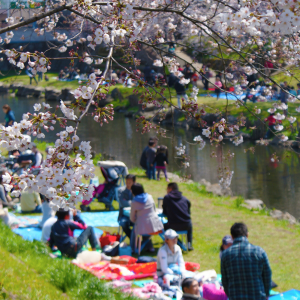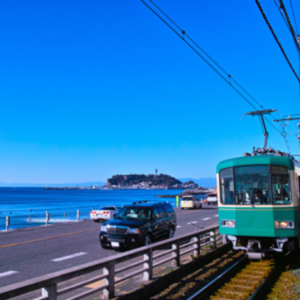Japan’s Cherry Blossoms and Tourism Boom: Growth in Foreign Visitors and Hotel Booking Situation
Cherry blossoms (“sakura”) are iconic symbols of spring in Japan, cherished by Japanese people for centuries. Among the various types of sakura, the most widely known is the Somei Yoshino, which blooms from late March to early April. During this season, many people gather in parks and along riverbanks to enjoy hanami (flower viewing), having meals and drinks under the fully bloomed cherry trees.
The peak cherry blossom viewing period varies depending on the region, with the sakura front (the blooming progression) moving from the south to the north. In Okinawa, cherry blossoms start to bloom as early as late January, while in Hokkaido, they can be seen as late as May. This staggered blooming period allows visitors to experience cherry blossoms at different times across Japan. Famous viewing spots include Tokyo’s Meguro River, Osaka Castle Park, Kyoto’s Philosopher’s Path, and Hirosaki Park in Aomori, making these destinations must-visits for tourists.
Japan is also home to many varieties of cherry trees besides Somei Yoshino, such as shidare-zakura (weeping cherry), yae-zakura (double-flowered cherry), and Kawazu-zakura. These varieties differ in terms of blooming time, color, and shape, offering unique scenery across regions. This diversity attracts many visitors to gardens and parks showcasing rare species, making these areas popular tourist destinations.
The fleeting beauty of cherry blossoms also embodies the Japanese aesthetic concept of mono no aware—an appreciation of the transient nature of beauty. The short-lived blossoms, which peak and fall within a brief period, symbolize the ephemeral nature of life and have inspired countless poems and artworks throughout Japanese history.
In recent years, the popularity of “sakura tours” has surged among foreign tourists. According to data from the Japan National Tourism Organization (JNTO), the number of foreign visitors to Japan during the cherry blossom season has increased year by year. In March 2024, over 3 million foreign tourists visited Japan for the cherry blossom season, an 11% increase compared to the same period in 2019 before the pandemic【Source: 20240417_monthly.pdf (jnto.go.jp)】. This growth trend is evident not only in Asian markets such as Taiwan, South Korea, and Hong Kong, but also in Western countries, indicating a global rise in interest in Japan’s cherry blossoms.

As the number of visitors increases, the demand for accommodations near popular cherry blossom spots has skyrocketed. In major cities such as Tokyo, Kyoto, and Osaka, hotel reservations during the peak bloom period from late March to early April have become extremely difficult. For example, in 2023, occupancy rates for major hotels reached around 90%, and room rates saw an increase of up to 50%. In Kyoto, especially, the prices for long-established inns and luxury hotels doubled during the cherry blossom season, making early reservations a necessity.
Thus, while the cherry blossom season is a special time for visitors to experience the beauty of Japanese spring, it is also a period that requires careful planning due to high demand and accommodation costs. The charm of cherry blossoms lies not only in the flowers themselves but also in the deep connection to Japanese culture and tradition, as well as the memories and emotions they evoke. Come and experience the arrival of spring in Japan through the lens of these beautiful blossoms.
.png)
References:
- Foreign visitor statistics during the cherry blossom season:
Japan National Tourism Organization (JNTO), Monthly Statistics Report for March 2024【Source: 20240417_monthly.pdf (jnto.go.jp)】. - Hotel occupancy and price trends:
Hotel Price Trends during the Cherry Blossom Season | HotelBank【Source: HotelBank Article】. - Detailed insights on hotel price surges in major cities:
Hotel Price Surge in Tokyo and Kyoto During Cherry Blossom Season | Toyo Keizai Online【Source: Toyo Keizai Article】.

-2-300x292.png)
